Featured Panoramic Photo Above:
Classic Charles Conlon photo of Ty Cobb sliding into Jimmy Austin
Baseball History Comes Alive Now Ranked As a Top Five Website by Feedspot Among All Baseball History Websites and Blogs!
(Check out Feedspot's list of the Top 35 Baseball History websites and blogs)

Guest Submissions from Our Readers Always Welcome! Click for details
Baseball History Comes Alive Ranked #2 by Feedspot Among the Internet’s 20 Best Baseball Websites and Blogs Click here for details
Scroll Down to Read Today’s Essay
Subscribe to Baseball History Comes Alive for automatic updates. As a Free Bonus, you’ll get instant access to my Special Report: Gary’s Handy Dandy World Series Reference Guide!
1930s All-Star Games Photo Gallery
Click on any image below to see photos in full size and to start Photo Gallery:
It’s All-Star Week:
Let’s Take a Look Back!
With All-Star Week upon us, it’s always fun to take a look back at some of the earliest games of this series. Remember that the first game was played at Comiskey Park on July 6, 1933, in front of 49,200 fans with the American League winning 4-2. The winning pitcher of the first game was Yankee Lefty Gomez and the loser was Cardinal Bill Hallahan. Gomez also drove in the first run, a single scoring Jimmy Dykes. Lefty Grove was retroactively credited with a save.
No surprise, the star of the game was Babe Ruth, hitting the first All-Star home run, a two-run blast in the bottom of the third inning. He also made a great catch in the eighth up against the scoreboard in center. Frankie Frisch also hit a home run for the National League.
In the featured photo above, we see the American League team photo from the first All-Star game. Player identifications are at the end of the post.
A Little All-Star Game Background
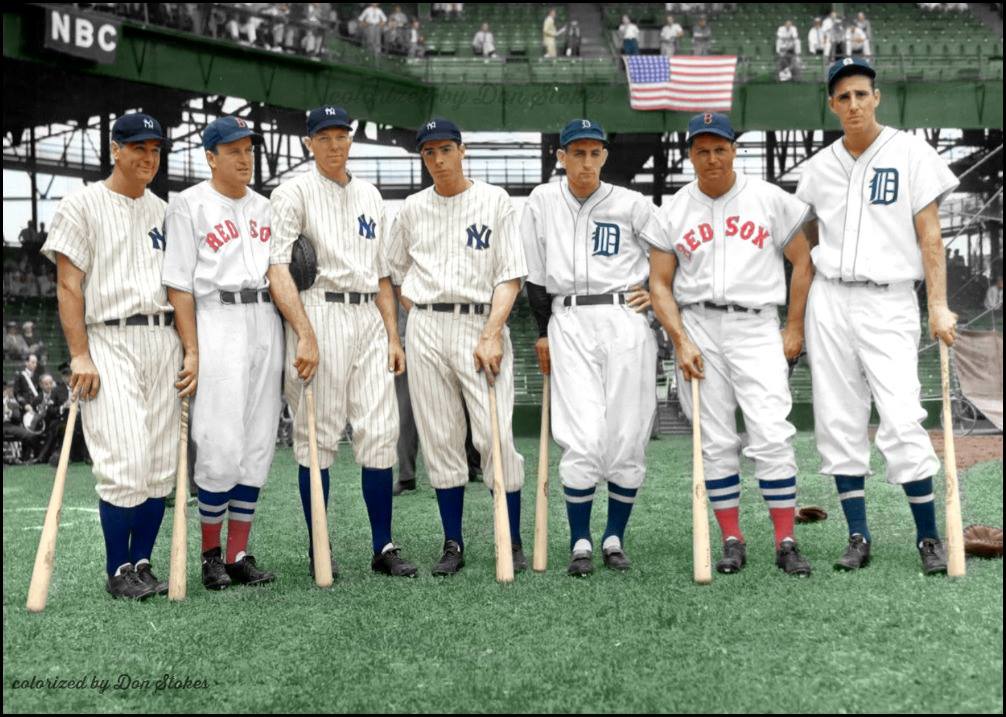
The idea for an All-Star game was the brain-child of Arch Ward, the sports editor of the Chicago Tribune. It was originally Ward’s intention that the game be a one-time event to boost morale during the Great Depression; but, as we know, it soon became an annual event, the greatest All-Star game of any professional sport. Because of the intense rivalry between the two leagues, the game grew to hold great significance.
Last year during All-Star week, I wrote about the classic 1941 All-Star game. This was the game won on a two-out, three-run walk-off homer by Ted Williams off the Cubs’ Claude Passeau, giving the American League a 7-5 victory. Ted once described this hit as the biggest thrill of his baseball career. Of course, this was back in the days before interleague play when the rivalries between the two leagues actually meant something.
The 1940 All-Star Game
I’ll continue this tradition by writing about another All-Star game from days past: the 1940 All-Star game. It was played 83 years ago today, on Tuesday July 9, 1940, at Sportsman’s Park in St. Louis in front of 32, 373 fans. The game was played in a crisp 1:53. This was the eighth game in the All-Star series. The American League had been dominating—with lineups stacked every year with some of the game’s greatest hitters—by winning six of the first seven games.
While this game did not have the ninth innings dramatics of the 1941 game, it did have some outcomes worthy of note. The National League won the game 4-0, as five National League pitchers—Paul Derringer, Bucky Walters, Whit Wyatt, Larry French, and Carl Hubbell—combined to give up only three hits, while walking two, and striking out eight. It was the first-ever All-Star game shutout.
Fans arriving late to the game would have missed most of the action, as Boston Bee outfielder Max West hit a three-run homer in the bottom of the first to provide more than enough firepower for the Senior Circuit’s eventual victory. West’s blast into the right-centerfield stands came off the Yankees’ star pitcher, Red Ruffing, after Arky Vaughan and Billy Herman had led off with singles.
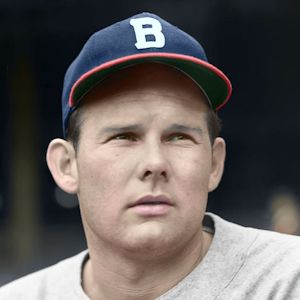
Amongst all the big-name stars, West, a career .251 hitter with 77 home runs and 380 RBIs, was an unlikely hero. This was his only All-Star appearance (and his only at-bat, as he was removed from the game due to an injury) in his seven-year career. Was he in the All-Star lineup only because each team had to have a representative? Looking over the nondescript Bees’ roster, it’s entirely possible. They eventually finished the year in seventh place with a 65-87 record, ahead only of the perennial cellar-dwelling Phillies, who finished at a dismal 50-103.
Checking out the starting lineups for the game, we see some of the biggest names from the era:
American League, managed by Joe McCarthy:
Cecil Travis 3B, Ted Williams* LF, Charlie Keller RF, Joe DiMaggio* CF, Jimmie Foxx* 1B, Luke Appling* SS, Bill Dickey* C, Joe Gordon* 2B, Red Ruffing* P.
National League, managed by Bill McKechnie:
Arky Vaughan* SS, Billy Herman* 2B, Max West RF, Johnny Mize* 1B, Ernie Lombardi* C, Joe Medwick* LF, Cookie Lavagetto 3B, Terry Moore CF, Paul Derringer P.
*Hall of Fame. Other future Hall of Famers in attendance were: Bob Feller, Lou Boudreau, and Hank Greenberg.
Umpires for the game were: Beans Reardon, George Pipgras (former Yankee), Bill Stewart, Steve Basil. Among the many announcers were Hall of Famers Red Barber and Bob Elson.
One interesting fact is that Joe McCarthy was the nominal American League manager since the Yankees had won the 1939 American League pennant. But the game was actually managed by Joe Cronin. Apparently, some baseball higher-ups thought “McCarthy had the honor too many times.” (1) Not sure whose decision this was.
1933 American League All-Stars Identifications
Top Row, L-R: ?; Bill Conroy, Lou Gehrig, Babe Ruth, Oral Hildebrand, Connie Mack (Mgr.), Joe Cronin, Lefty Grove, Art “Sharkey” Colledge, Bill Dickey, Al Simmons, Lefty Gomez, Wes Ferrell, Jimmy Dykes, Ephraim “Sharkey” Colledge. Bottom Row: L-R: Trainer, Eddie Collins, Tony Lazzeri, Alvin Crowder, Jimmy Foxx, Art Fletcher, Earl Averill, Ed Rommel, Ben Chapman, Rick Ferrell, Sam West, Charlie Gehringer, ?.
(Ephraim and Art “Sharkey” Colledge were brothers and long-time White Sox clubhouse attendants. No one ever called them by their real names. Both were known as “Sharkey”).
Let’s hope this year’s game has as many memorable moments as some of the earlier games in this classic series!
Gary Livacari
Information: Excerpts edited from the 1933 and 1940 World Series Wikipedia page. Footnote (1) from Baseball Almanac, 1940 World Series page.
Subscribe to our website, Baseball History Comes Alive! with over 1400 fully categorized baseball essays and photo galleries, now surpassing the one million hits mark with 1.040M hits and over 850 subscribers

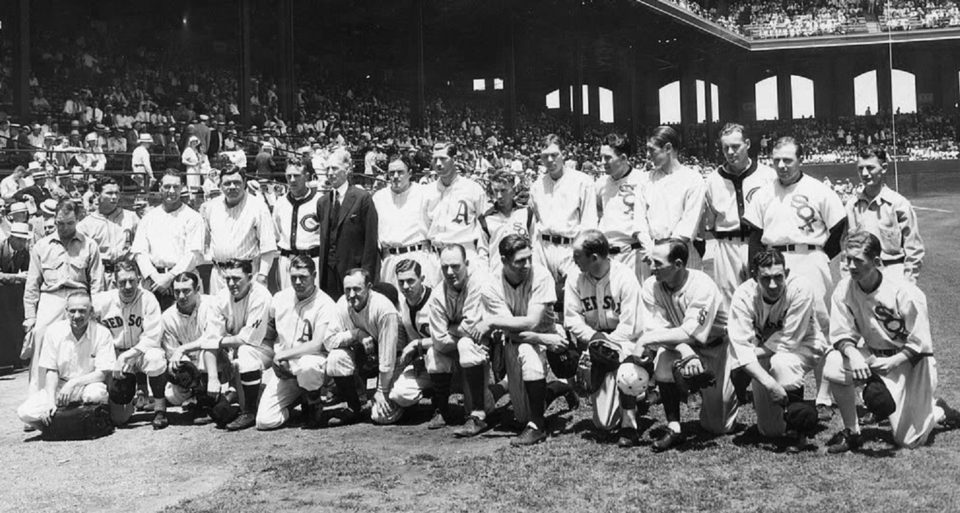
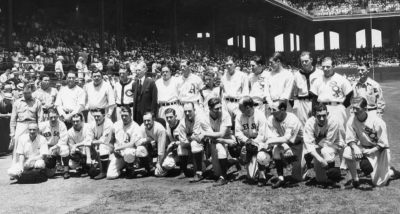
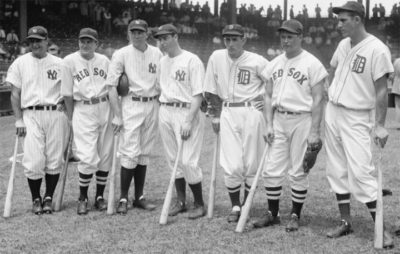
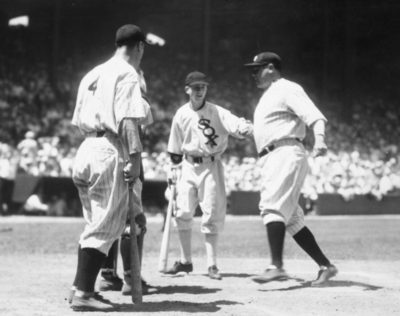
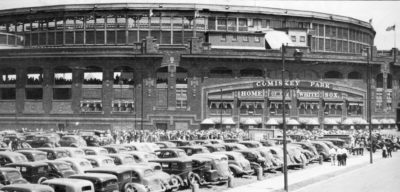
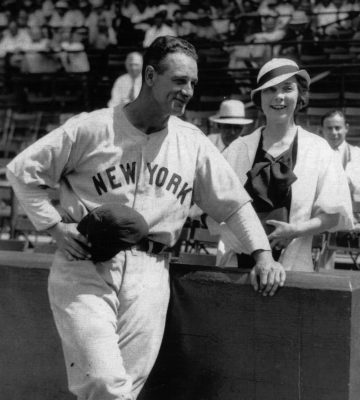
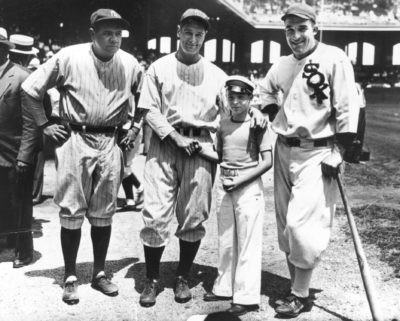
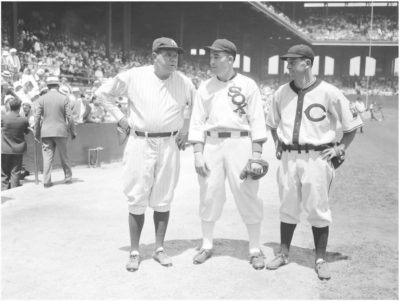
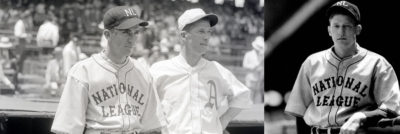
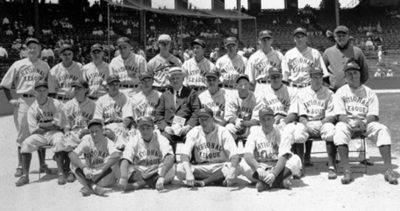
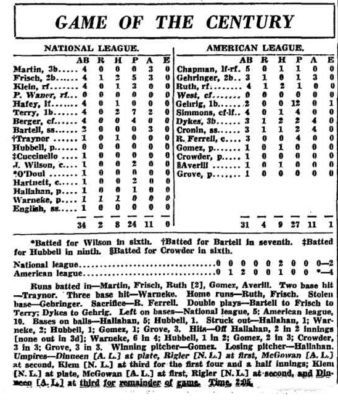
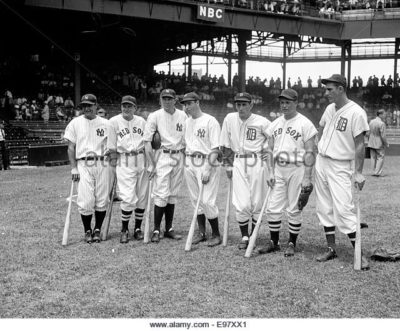
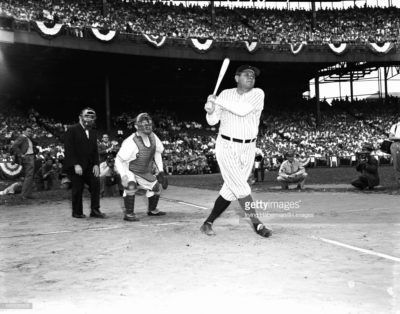
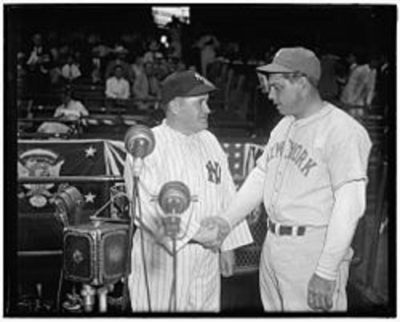
I don’t really care about the All Star Game anymore. The mystique has been removed thanks to Interleague play. I used to go out of my way to watch the game. Not anymore. The mystique also has been removed from the WS but I watch it because it is the ultimate prize. The whole week leading up to the ASG it is a big commercial joke.
Thanks Ken…I think many share your sentiments!
Longtime baseball fan who for many years anxiously rooted for the AL to take the midsummer classic. Now, if the game was played for free in our small town ballpark I wouldn’t walk the quarter-mile to attend.
The people who run baseball don’t like baseball. They like revenue. The dilution of the two leagues to the point of disappearance is yet another sad milestone in the history of what was once The American Pastime.
I’m with you y’all, Kenneth, Gary & Tom, appreciating the chance to reflect on 20th C. baseball, but with little or no interest in today’s game. As you point out, the many “improvements” inflicted upon genuine fans in the last quarter-century have helped to distort and destroy a beloved pastime rather than making it any better. A “big commercial joke” you say? Perfectly put.
But here’s a backward glance you might find interesting, involving the 1954 midyear classic: You’ll remember the ’54 Indians rode to the pennant with a 111-43 record, their .721 winning percentage the best ever in the history of the American League. They aced out the Yankees by eight full games, and were prohibitive favorites to clean the floor with the Giants in the Series that fall. In the All-Star game, played in Cleveland, their three guys (Avila, Rosen & Doby) found a way to cope with N.L. pitching, going 7 for 8 among them (.875), with a homer by Doby and two by Rosen, helping the Junior Circuit to eleven runs and the win. It’s no wonder so few writers picked New York to do much with the Tribe that year!
But can you recall the 2022 game? Me neither.
“Give me that old-time religion” — and old-time baseball!
Best wishes,
Michael
Gerat points…Not only can I not recall the 2022 game, I can’t recall any over the past 20 years!
On a similar note and also keeping with the topic at hand, I grew up a Cleveland Indians fan for 70 years, only to be recently notified I’d been put on waivers and given my unconditional released. The Cleveland Baseball Corporation would no longer be catering to my aging demographic, and to prove it they fired Chief Wahoo and changed the team name to the altogether ridiculous ‘Guardians’ which sounds like a brand of adult diapers.
I’m adrift now, trying to be a fan of the Oakland A’s and whatever team happens to be playing Cleveland today.
Haha! Some great points there…thanks!
Enjoyed your review of ’40 game & agree with posted comments.
Thanks Fred!
Some outstanding comments and my sentiments exactly on the All-Star Shame.
Very funny, Tom, on one of the worst nicknames ever for a baseball team!
And, Professor Keedy, always looking to down grade the beloved New York Giants (who beat the Dodgers 13 of 22 that year). You’re right, though, the Indians were formidable in ’54. But the writers didn’t reckon with Mays (.345), Mueller (.342), Antonelli, Gomez, Maglie, Wilhelm, Grissom and the redoubtable James Lamar “Dusty” Rhodes. Dusty knew exactly where that right field fence was–before the PG got really big in that crazy horseshoe park!
Gary, you pointed out that Ted Williams three-run walk-off blast in the 1941 classic was his biggest thrill in the game. But his most crushing disappointment was eight years later at Yankee Stadium. Boston rolled into NY, after blazing 12 of 13 down the stretch and needed only one game of two in October to win the AL pennant. They lost both and Ted sat motionless on the bench, long after the second game ended.
Thanks Bill. Were you referring to 1948 and/or 1949? Weren’t those both two hardbrraking losses for the Red Sox?
1949 was the year, Gary, when a physically compromised Joe DiMaggio almost single-handedly beat the Red Sox.
Note to Dr. Schaefer and self: My thought about 1954, obviously poorly articulated, was that the Giants were to be congratulated on their Series sweep of Cleveland, considering the Indians’ incredible win/loss record, and the way their All-Stars manhandled N.L. pitching in the midsummer dream game. Seeing the error of my first offering, I now look forward to crafting postscripts of clarification with many forthcoming exchanges.
Note to Dr. Hine (and self): Those are bull’s-eyes, Kind Sir, on Chief Wahoo and the Adult Diapers! I’m still laughing. As we now know, in today’s culture one can never do enough to appease the chronically offended — even in Ohio. Go Guardians!
Best regards,
Michael